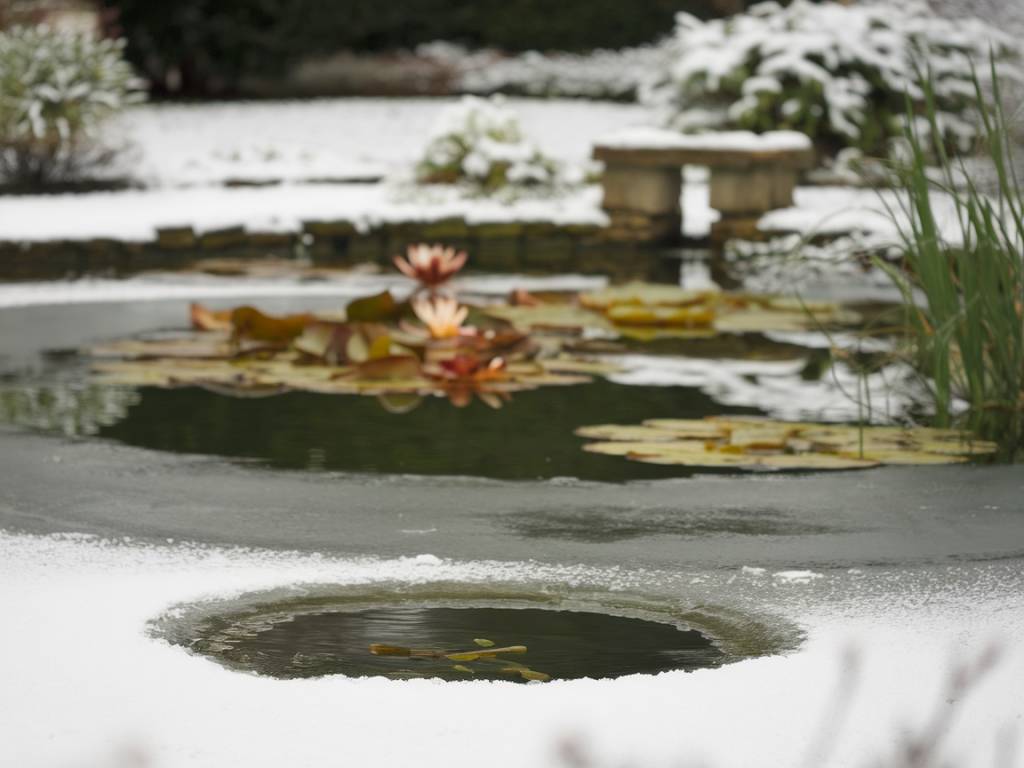As the chill of winter approaches, it’s essential to prepare your garden pond to ensure the well-being of both your fish and plants. Winterizing your pond isn’t just about preventing ice formation; it’s about creating a safe environment that maintains the delicate balance of the ecosystem. Let me share with you my tried-and-true methods to keep your pond thriving all winter long, inspired by natural gardening techniques and permaculture principles.
Understanding Pond Ecosystem in Winter
A garden pond is a dynamic ecosystem where fish, plants, and microorganisms interact in a delicate balance. When temperatures drop, this balance can be disrupted. Fish can become stressed, plants can suffer, and the overall health of the pond can deteriorate. By understanding the specific needs of your pond’s inhabitants, you can take the necessary steps to ensure their survival through the cold months.
Monitoring Water Quality
Before taking any action, it’s crucial to check the water quality of your pond. Use a testing kit to measure pH, ammonia, nitrite, and nitrate levels. Ideally, your pond should have a pH between 6.8 and 8.0, and ammonia and nitrite levels should be close to zero. High nitrate levels can be harmful, especially in winter when biological processes slow down.
Regular water testing can help you identify issues early and take corrective measures like partial water changes or adding safe water treatments.
Cleaning the Pond
A clean pond is a healthy pond. As autumn leaves fall, they can accumulate in your pond, decay, and release harmful gases. To prevent this, use a pond skimmer or net to remove leaves, debris, and any dead plant matter. It’s also a good idea to trim back dead or dying vegetation around the pond to minimize organic matter entering the water.
For more intensive cleaning, consider using a pond vacuum to remove sludge and muck from the bottom. This will prevent the buildup of toxic gases during the winter months.
Protecting Fish
Fish are more sensitive to temperature changes than we might think. To help them cope with the cold, follow these steps:
Caring for Aquatic Plants
Aquatic plants also need special attention as winter approaches. There are three main types of pond plants: hardy, tropical, and floating. Each requires different care:
Using Pond Covers and Heaters
Pond covers can be an effective way to protect your pond from debris and reduce ice formation. Use a mesh net to cover the pond, or consider a polycarbonate or polystyrene cover for added insulation.
If you have particularly harsh winters, installing a pond heater can help maintain a stable temperature. Choose a heater that’s appropriate for the size of your pond and follow the manufacturer’s instructions for safe installation and use.
Planning for Next Spring
As you prepare your pond for winter, it’s also a good time to think ahead to spring. Here are a few tips to ensure your pond is ready to flourish once the warmer weather returns:
Embracing Natural Solutions
Winterizing your pond doesn’t mean relying on chemicals or artificial solutions. By embracing natural methods and permaculture principles, you can maintain a healthy pond ecosystem year-round:
Final Thoughts from the Pond’s Edge
Winterizing your garden pond may seem like a daunting task, but with a little preparation and care, it’s entirely manageable. By following these natural strategies, you’ll provide a safe haven for your fish and plants through the winter months and set the stage for a vibrant and healthy pond come spring.
Happy gardening, and may your pond thrive through every season!
Warm wishes,
Samanta
